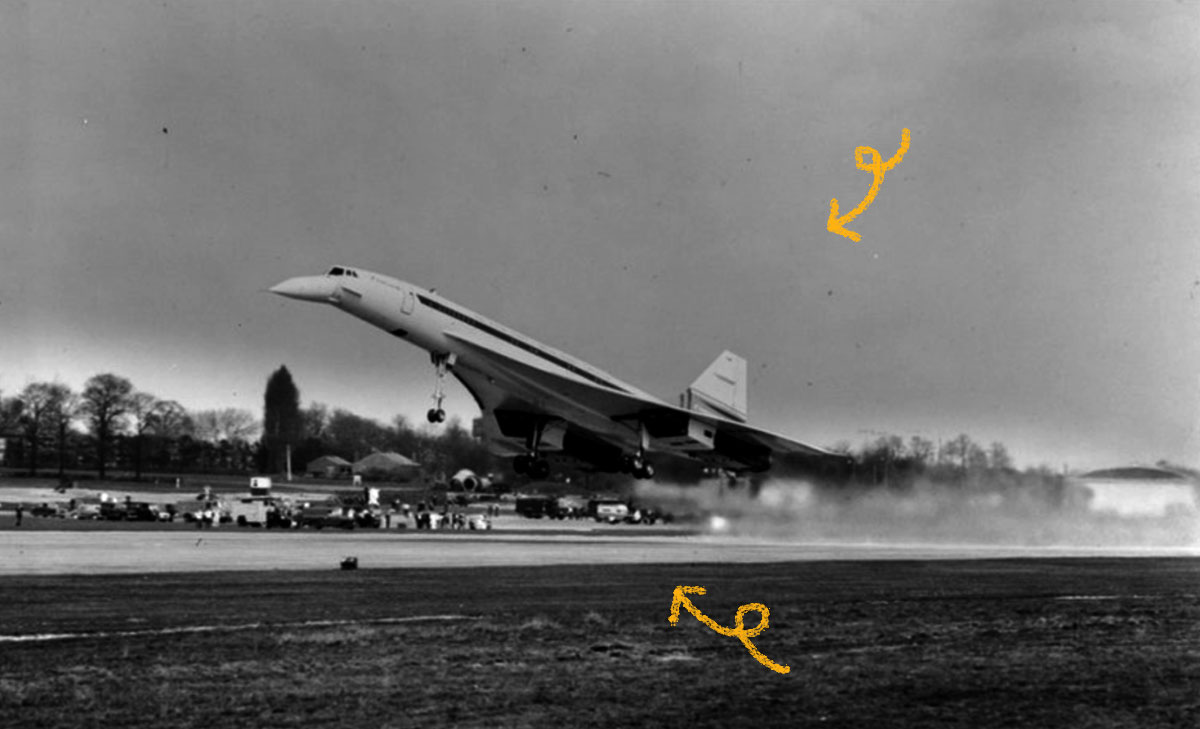The Concorde famously made supersonic commercial air travel a reality from 1976 to 2003. It was co-developed by BAC, a forerunner of BAE Systems, and Aerospatiale, now a part of Airbus. Only 20 planes were ever built, with just 14 of them being production aircraft. The Concorde was operated by Air France and British Airways and only travelled along two routes. The idea for a supersonic commercial jetliner was conceived after Chuck Yeager crossed the sound barrier in 1947. In 1962, France and Great Britain signed a concord agreement to build a supersonic jetliner together (hence the name, Concorde). The massive engines used to power the supersonic jetliner were developed by Rolls-Royce/Bristol Siddeley and Snecma. Each engine produced 38,000 pounds of thrust and left a signature afterburn visible in the sky. The design for the aircraft itself also included unique elements, such as the double delta wing and an adjustable drooping nose for pilot visibility. The Concorde planes were operated by a crew of three: two pilots and a flight engineer. The first Concorde was presented to the public in 1967 in Toulouse, France; the Concorde took its first supersonic flight two years later, in 1969. On January 21, 1976, two Concordes — one from Air France and one from British Airways — took off on their respective routes simultaneously to celebrate the plane’s first supersonic passenger flights. The Concorde could cruise at Mach 2.02 (around 1,340 mph) and could fly comfortably at altitudes of up to 60,000 feet. To put it in perspective, this means that the supersonic airliner was able to cross the Atlantic in just 3 hours! It quickly became the flight of choice for the rich and famous, particularly in the ‘90s. Sadly, on July 25, 2000, an Air France Concorde burst into flames and crashed, resulting in many deaths and the grounding of the fleet. While the Concorde fleet did return to service a year later, the business never recovered. Citing skyrocketing maintenance costs and reduced demand, operators permanently retired the entire Concorde fleet in 2003.

Your go-to guide for weird history facts
Subscribe to the FREE daily email that makes learning about history fun.


